STRATFORD to WANSTEAD



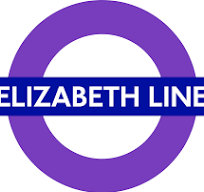





This route can begin at THREE MILLS

Starting at STRATFORD, along the HIGH STREET
HIGH STREET
Stratford High Street was set in its present alignment around 1115, when Queen Matilda or Empress Maud as she was sometimes known, commanded commanded that bridges should be built over the 5 channels of the river Lea and that a raised cause way should be built to link them. Before then the road crossed the Lea further north at Old Ford.
ST.JOHN’S CHURCH
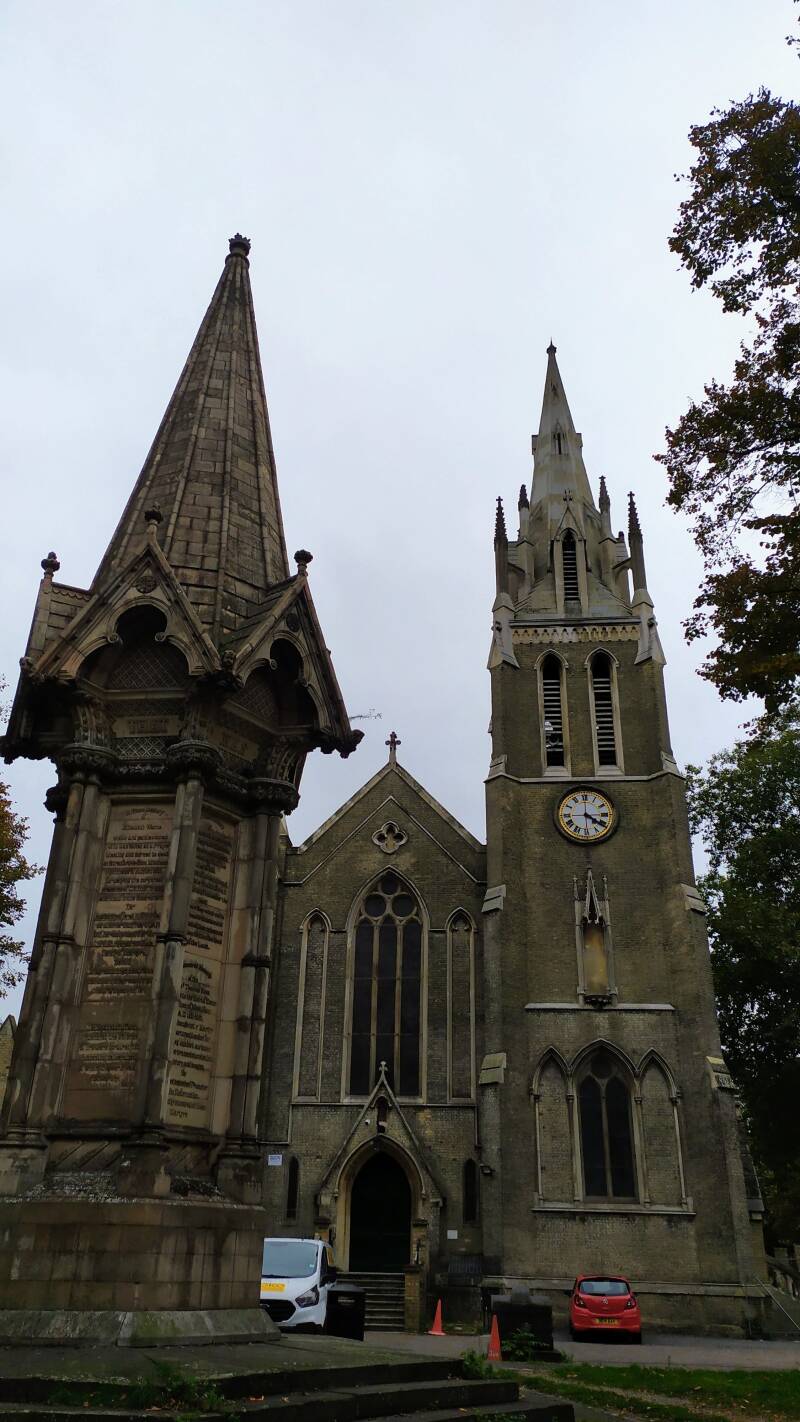
MEMORIAL TO THE PROTESTANT MARTYRS

OBELISK
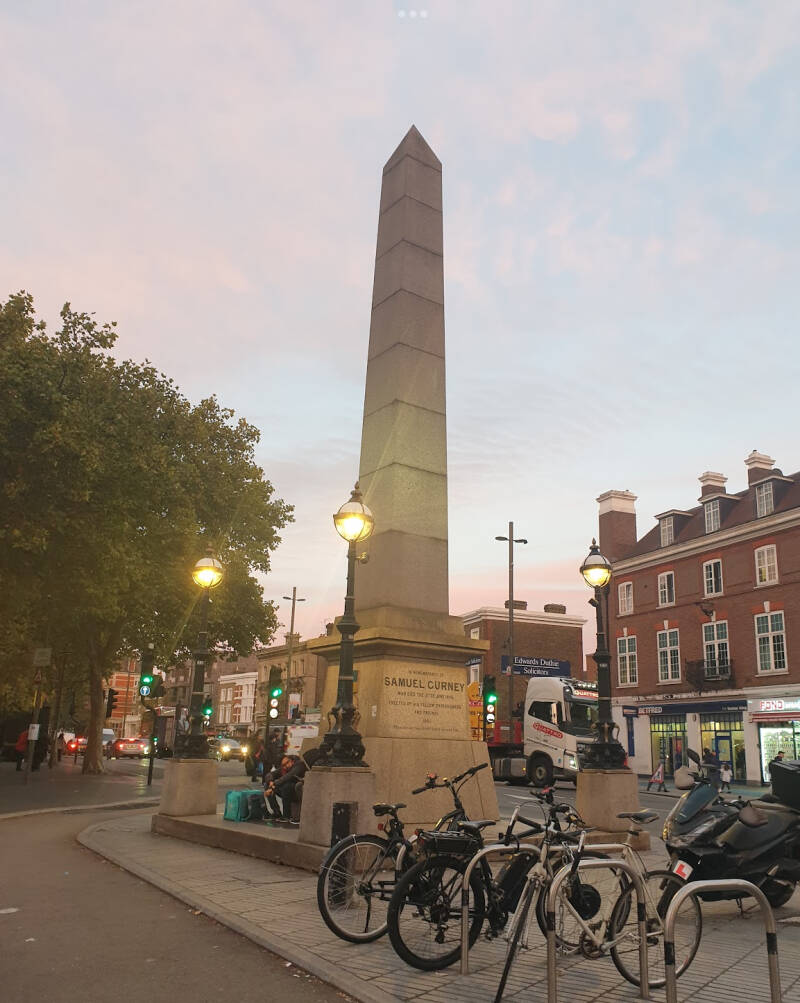
KING EDWARD VII PH

FORMER FIRE BRIGADE STATION
FORMER TOWN HALL, NOW EVENTS VENUE


RAILWAY TREE
STRATFORD FRIEZE
FORMER BOROUGH THEATRE, LATER OPERA HOUSE, LATER REX CINEMA, LATER BINGO HALL
371-373 Stratford High Street. This building extending as far as Bridge Road, was originally the Borough Theatre and Opera House, erected in 1895. It was therefore fitting that Beethoven should be featured on the building. The Borough was one of the largest theatres in London and had room for more than 3000 people. The theatre opened with Sir Henry Tree's company from the Haymarket Theatre performing Henry IV part 1. Later, they put on grand opera, and one of the companies that sang here was the Carl Rosa Opera Company. But in 1933 it was converted into the Rex Cinema and in 1969 it became a Bingo Hall. These changes of use may account for Beethoven's look of displeasure. The name of the Borough Theatre is still visible high over Beethoven's head, when viewed from the far side of the dual carriage way.
STRATFORD HIGH ST. STA., NOW DLR (STRATFORD INTERNATIONAL EXT.)

Whimsical figures including a horse with a snail on its head and what looks like a dodo perched on the back of a galloping unicorn.
SITE OF THE CHANNELSEA BRIDGE.

In 1814, the London Bridge house committee came along and marked one of bridges as being the responsibility of the City of London. Unfortunately they marked the wrong one. As a result St Thomas's Bridge became Pegshole Bridge and vice versa. The mill owners who had previously been responsible for the upkeep of the marked bridge did not complain because they now had a smaller bridge which was cheaper to maintain.
Alongside the CHANNELSEA PATH.
LU DEPOT

SITE OF WEST HAM GASWORKS
ABBEY MILLS PUMPING STATION
VICTORIAN SEMI-DETACHED

4 pairs, BAZALGETTE 1865
Yellow, red, black bricks, with stone dressings.
Hipped slated roofs, symmetrical with projecting gable wings. Tall stone-capped chimney stacks
Gauged brick arches with polychrome vossoirs.
Recessed round headed sash windows.
Red brick impost bands to GFl w.
Raised brick chill band to FFl w.
Central panelled entrance doors. Fanlights.
N O S EMBANKMENT, OPENED AS THE GREENWAY

LONG WALL ECOLOGY GARDEN

CENTRIFUGAL PUMP

ABBEY CREEK, CHANNELSEA ISLAND, CHANNELSEA RIVER
CHANNELSEA ISLAND was the site of the ABBEY MILL, owned by QUEEN MATILDA to BARKING ABBEY as part of an endowment for BOW and CHANNELSEA BRIDGES. Rebuilt several times, it was finally destroyed during WW2.
Now, a wildlife heaven as a refuge for breed8ng moorhens
PLANNED MEGA-MOSQUE?
Islamic Trust
TRINITY CHAPEL
ABBEY ROAD DLR STA


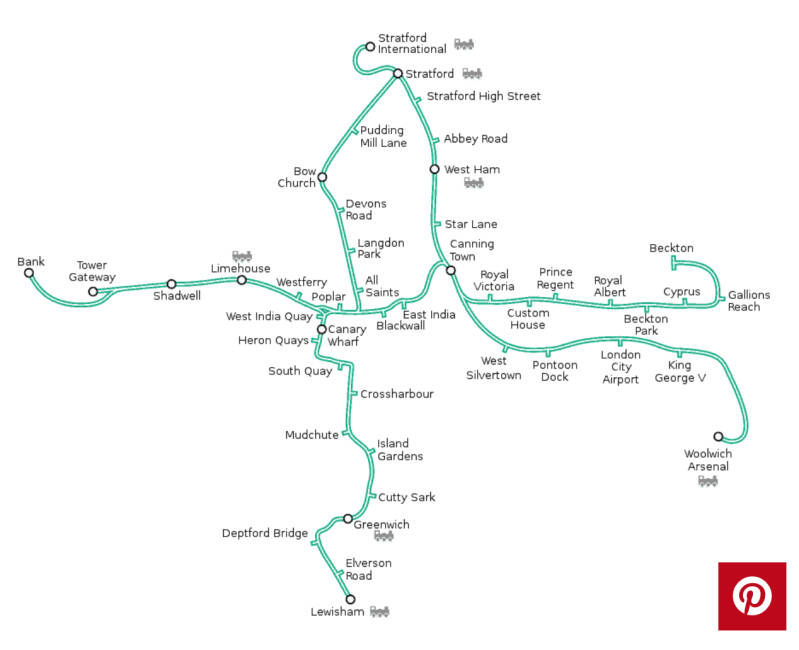
Not this one


STONE MARKING THE SITE OF THE ABBEY

BRIDGE ROAD DEPOT.AIR RAID PRECAUTION AND FIRE SERVICE MEMBERS
Part of the depot was used as a CLEANSING and AMBULANCE STA. On BLACK SATURDAY 7th Sep.1940, the beginning of the BLITZ, at 7pm,this place took a direct hit (one of the first places to be combed in W.H.)
ABBEY GARDENS

A community garden which has escaped development thanks to the archaeological findings of the ABBEY remains (GATEHOUSE)
SR. MARY’S STRATFORD-LANGTHORNE ABBEY
A SAVIGNIAC abbey which became CISTERCIAN (after the merger in 1147 Abbey of Stratford Langthorne (meaning Long Thorn) is no longer standing. It was home to the “WHITE MONKS”, who followed the strict observance of austerity as commanded the BENEDICTINE RULE.
Founded in 1135 by William de MONTFICHET who succeeded his father (although he dropped his name) Robert GERNON as owner of one of the local manors.
The other manor was given to RANULPH PEVEREL.
With the NORMAN CONQUEST new owners (Norman families) took over England. MONTIQUET is a Norman village. There was a MOUNTFICHET CASTLE/TOWER in the CITY. STANSTED MONTFICHET, HERTFORDSHIRE, was another of the GERNON family manors
In the DB GERNON appears as GRENO.
WESTMINSTER ABBEY owned part of the land, as well
This Abbey was an important centre for four centuries, a wealthy institution, owner of much land in ESSEX (WEST HAM, LEYTON, BURSTEAD, BIGGIN in CHADWELL ST.MARY, MONKHAMS, in WOODFORD).
The religious house was surrounded by buildings for lay brothers and hospitality. There were also workshops for brewing, shearing, weaving and tannery with farm buildings to service the extensive holdings and mills on the Bow Back Rivers. Some of these were tidal mills, like those at Three Mills. These were owned by the Abbey, but the surviving mill was built much later.
It was the fifth largest in England – as important as its sister Abbeys at Jervaulx, Rievaulx and Fountains, all in North Yorkshire.
In 1267, for a time, the Abbey became the court of Henry III for the visitation of the Papal legates
For a brief period in 1267 HENRY III made this his headquarters in his struggles with SIMON DE MONTFORT.and it was here that he made peace with the barons under the terms of the Dictum of Kenilworth.
During his rule, Montfort called two famous parliaments: the Oxford Parliament stripped Henry of his unlimited authority, while the secondincluded ordinary citizens from the towns.[5] For this reason, Montfort is regarded today as one of the progenitors of modern parliamentary democracy.
It ceased existence in 1538 in the reign of HENRY VIII at the time of the DISSOLUTION of the monasteries.
Survivals
After the suppression, a small hamlet developed locally was called WEST HAM ABBEY. Some monastic buildings were adapted for private use. The GATEHOUSE became a high status dwelling, further extended to the Northin the same century. A brick wall was erected to the East.
The next two centuries brick lined CESSPITS were constructed to provide the household with better sanitation.
An 18th c. Watercolour by FRANCIS GROSE depicts the gatehouse,
With the industrial encroachment, In 1825 it was demolished, while mid-19th c. all other visible traces of the ABBEY had disappeared.
The GRAT GATE was discovered in 1973, and and reburied for proteccions. In 2008 they were uncovered area, and hitherto unexcavated areas were investigated.

Some parts which were neglected and fell into dereliction were quarried for stone and that explains why some of the masonry is thought to have been preserved and is now in ALL SAINTS CHURCH, West Ham. KEYSTONE. The stone illustrated shows five skulls, and is thought to have been over the entrance to the Charnel House of the Abbey.
WINDOW FRAME. There is also a double window frame, but this was under wraps for repairs in 2006-7. The latter did not come directly from the abbey. For some of the stonework was rescued from the ruins of the abbey and was used in building the Adam and Eve public house.
BAKERS ROW
The street follow the access line to the abbey.
Was langthorn an ingredient for making bread?
Was the site of the abbey bakery?
More survivals of the Abbey
CHEVRONS AND CROZIER

The chevrons from this device, originally from the arms of the Mountfitchet family, together with an abbot's crozier were incorporated into the arms of the former County Borough of West Ham in 1887. The same arms were adopted by the new London Borough of Newham in 1965.
CROCKETTS LEATHER CLOTHS WORKERS WAR MEMORIAL
It is a reasonable assumption that the people named on the monument worked for the Leather Cloth Company. COMTE ROBERT THE LESSEPS is the first name on the monument (the others being in alphabetic sequence) so one would expect to find he was the owner, director or chairman - he certainly was not operating a machine, or hauling supplies.
Kitwintt is ahead of us on this but their investigation has failed to find any connection between de Lesseps and the Leather Company. And the listing entry of HISTORIC ENGLAND says that his "connection with the company is unclear." We asked our French consultant, John Hartley, to search the Gallic corner of the web but there also the only link between de Lesseps and Crocketts is this memorial. Bit of a mystery.
The Crockett International Leather Cloth Company, operating from Newark, New Jersey (USA) and West Ham, London (England), manufactured artificial leather and other textiles at its factory on Abbey Road from 1855. As The Leather Cloth Co Ltd, it continued to produce cloth until the works were shut down in 1961. In common with other businesses, following the First World War the firm raised a memorial to commemorate those staff that died during the conflict. This stood within the factory premises,

STRATFORD PARK

ALL SAINTS WEST HAM PARISH CHURCH



There has been a building on the site since at least the late 12th century - the three blocked clerestory windows on either side of the present building's nave date to that time
The nave was largely rebuilt halfway through the 13th century, adding five-bay arcades on the north and south sides.
A north chapel was added in mid 15th century, closely followed by a south chapel. Many of the windows in the north aisle seem to date to the late 15th century, implying another rebuilding in that area at that time,
Around 1547 the churchwardens sold some of the church's communion plate and a property in Stratford to fund a rebuilding of the north chapel in brick, without the parish' permission - this included a turret for a stairwell into a rood screen on its north side. The Protestant Thomas Rose was made its vicar in 1552.
Relatively small reforms and additions during the 18th c.
The parish's population was growing and all three galleries were expanded again in 1821–1824 to cope with the increased congregations. Even so, an 1827 account stated that only 12% of the parish's population could be seated. Chapels of easebegan to be added to the parish, such as St Mary's Church, Plaistow in 1830 and St John's Church, Stratford in 1834
George Dyson and George Gilbert Scott rebuilt All Saints in 1847–1849, replacing the box pews with modern pews that allowed for more free sittings and probably altering the old nave dormers into their present configuration. Scott was called in again in 1865–1869, removing the west gallery, inserting new windows and designing a new reredos.
A Few Anecdotes
They would have been less happy with one of the curates of this church, William Dodd, who later got into financial difficulties, signed someone else's name on a promissory note, was found guilty of forgery and in 1777 was publicly hanged.b
the baptismal font, dated 1707, which bears the name of three churchwardens instead of the usual two (the ancient parish was once divided into three wards and the custom continues); and the other is the clock in the tower, made in 1857 to Lord Grimthorpe's design, and the prototype of Big Ben
About religion
“Our vision is to bring hope to the people of East London. We aim to play our part in seeing a renaissance: restoring lives, revitalising churches and renewing culture.
We are a diverse, dynamic and fast-growing church formed of multiple East London parishes. We have been commissioned as a resource church to serve young people, train diverse leaders and plant churches in partnership with a network of friends”.
FORMER ADAM & EVE PH
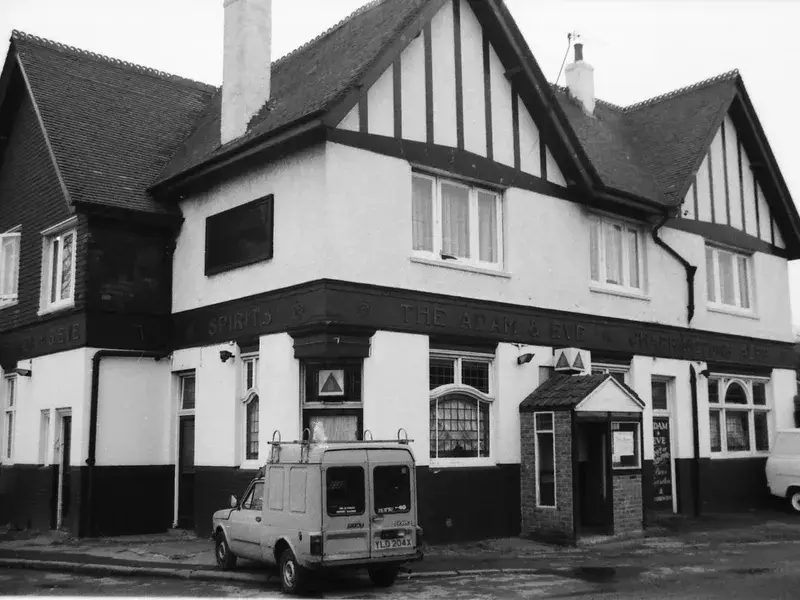
Perhaps the monks would have had a slight consolation from the fact that at least the pub had a biblical name. It has been closed for decades.
WEST HAM PARK

The largest public park in NEWHAM. 77 acres (31 ha). Owned and managed by the CORPORATION OF LONDON since 1874. Grants, donations, trading income and sponsorships help fund the registered charity that runs it.
Land originally part of UPTON HOUSE (later called HAM HOUSE) ESTATE.
WILLIAM ROOKE inherited it and, in 1559, enlarged it. Alderman of London and barrister ROBERT SMYTH, and son SIR JAMES (LM London, 1684) followed.
In 1752 RN Admiral JOHN ELLIOTT, governor of NEWFOUNDLAND purchased it, followed in 1752 by JOHN FOTHERGILL (physician, philanthropist, Quaker, social and prison reformer) who enlarged it and created a sizeable botanic garden (“second only to Kew!”). He accepted plants in lieu of fees. Greenhouses and hothouses contained plants from exotic countries, the first tea plants ever seen in England… and he paid artists to paint them. After his death all was sold off.
JOHN SHEPPARD (executor) acquired the site in 1787, being succeeded by son in law SAMUEL GURNEY, banker and philanthropist, involved in penal reform in criminal justice, in the antislavery campaign, in the creation of hospitals, in the defence of dockers. His main seat was EARLHAM HALL, nowadays the admin centre of UNI.OF E.ANGLIA.
His sister was ELIZABETH FRY, who lived in UPTON LANE HOUSE.
Succeeded by JOHN GURNEY, who lived in NORFOLK (and died in Paris in 1856). He was the big cheese of GURNEY’S (and BIRBECK’S, BARCLAY’S, BUXTON’S) BANK.
The house was demolished in 1872. The GURNEYS gave a £10.000 contribution towards the purchase of the estate by the CORPORATION, who paid £100.000, and opened it as an open space (op. by the LM).
GUSTAV PAGAGENSTECHER was key to the establishment of the park. He joined the GURNEY family and was influential in the sale.
He became Deputy Chairman of the Parks Committee until his death in 1916.
As he was a keen cricketer had pitches put in the park. A plaque remembers him in the ORNAMENTAL BRIDGE of the WINTER GARDENS.
The STRATFORD BREWERY CRICKET CLUB played here.
Recently invented LAWN TENNIS shared space.

Near the west side of the park
EDWARD TEMME AVENUE is nearby
It honours a local swimmer who represented GB the 1936 OOGG and crossed the ENGLISH CHANNEL in both directions
FOOTBAL PITCHES
UPTON PARK FC played here before huge crowds and maybe inspired the formation of the THAMES IRON WORKS team.
CLAPHAM ROVERS scored the first FA CUP goal here against the home team.
LINDEN COTTAGES
On the site of earlier farm buildings, belonging to the estate, when farming was the main activity in this area
Canary Wharf view
Stratford church view

Other features
WANSTEAD HOUSE URN
At the top of a small flight of steps near the tennis courts. This is one of a pair of decorative flower urns which came originally from Wanstead House. They were no doubt purchased in the sale when in about 1823 William Pole-Tilney-Long-Wellesley, a nephew of the Duke of Wellington, sold off the contents of the house and gardens after he had squandered away his wife's inheritance. The urns may well date from the time when Samuel Gurney was living in Ham House and the present West Ham Park was part of his gardens.
This cairn was erected to mark the site where Ham House once stood, and was constructed from some of the masonry from the house that was pulled down in 1872.. A large house had stood here from the 16th century, and was called by various names such as Grove House and Rooke Hall. C. 1770 it was owned by Dr. John Fothergill who planted Botanical Gardens which eventually developed into West Ham Park. On the other side of Upton Lane there had stood a house called Upton House where in 1827 Joseph Lister was born in 1827. Lister was responsible for introducing antiseptic procedures into surgery. Elizabeth Fry, the prison reformer, lived in a house in Portway. Many famous personages visited her here, including Frederick, King of Prussia. West Ham Park was also referred to as Upton Park.

More information
The 6th BATTALION OF ESSEX REGIMENT was based here.
From 1917 allotments were set up in the park
The 909 BALLOON SQUADRON of the AUXILIARY AIR FORCE used the PAVILION as an emergency HQ (search light, generator, hut installation).
The park was turned into allotments again, a surface air shelter was built, the MODEL YATCH POND was used as an emergency water supply by the Fire Brigade, the HOME GUARD and the CITY OF LONDON BATTALION staged parades, football matches were organised between different air shelters by international volunteers in the service of peace
Until 2016 a NURSERY in the NE corner produced bedding plants for 5he CITY churchyards and other spaces, and, as well, for state occasions or banquets.

The route follows MARGERY PARK ROAD and NORWICH ROAD
From 1852 the estate was broken up and sold to developers: Cemeteries, FG Industrial SCHOOL, the GURNEY ESTATE of substantial middle-class houses, lesser streets of artisans’ dwellings, churches and associated schools (in the 20th c, RC).
South of ROMFORD ROAD a compact network of streets lined wits terraces of houses destined for clerks and skilled workers.
Shops were mainly in ROMFORD RD, UPTON LANE and WOODGRANGE RD. Rail and tram services were expanding.
DAY TRIPPERS were coming to enjoy WANSTEAD FLATS and the EAGLE AND CHILD TEA GARDENS
ROMFORD ROAD

Fire gutted the site of Wag Bennett's gym - 'Muscle Mansion' - on Romford Road in the early hours of 13 April this year. The photo shows firefighters at work trying to salvage this famous Forest Gate landmark.
ARNOLD SCHWARZENEGGER lived in the area in 1966-68, training in BENNET’S GYM (owned by couple Wag and Dianne) and slept on the couch of the couple’s house

First option ROUTE towards FOREST GATE
South of the railway lines lives a large community of IN, PAK, BANG
EARLHAM GROVE
No.16 Jews refuge

With the rise of Hitler to power in the 1930's, many Germany Jews sought refuge elsewhere in Europe, mainly within existing Jewish communities. Forest Gate played its part. A hostel was opened at 51a Romford Road, which accommodated 20 people. This later moved to 16 Earlham Grove. It was supported financially by the Earlham Grove synagogue (see below). Other families within the local community took in refuges who could not be accommodated there.
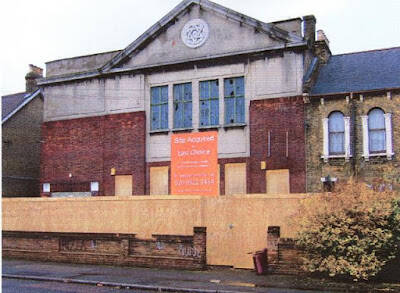
DURNING HALL

Durning Hall Christian community centre replaced an earlier Durning Hall, founded about 1885 at Limehouse (see here for fuller details). The premises in Woodgrange Road were registered for worship in 1953 (what is now the Aston Mansfield charity shop) and in 1959 the main buildings of the centre were opened in Earlham Grove, containing a church, hall, offices, gymnasium, and chaplain's flat. A hostel, with shops below, was later completed on the Woodgrange Road frontage.
Durning Hall, which is non-denominational, is administered by the Aston Mansfield charities trust, founded in 1930 by Miss Theodora Durning-Lawrence. It caters for all age-groups. The church of the Holy Carpenter, designed by Shingler and Risden Associates, has a fine altar wall of stained glass.
FORMER CURWEN SCHOOL
NOW CHURCH OF CHERUBIM AND SERAPHIM

Built as Earlham Hall in the 1870s, for full details, see here. Briefly, it was established in 1879 by John CURWEN, the Congregational minister, for his TONIC-FA-SOLCollege.
The FOREST GATE SCHOOL OF MUSIC was established here in 1885 by HARDING BONNER.
The Metropolitan ACADEMY OF MUSIC followed on from 1906 until World War II. In 1926 attendance peaked at 5.600 students, becoming the largest music institution in the country).
The London CO-OPERATIVE offices preceded the arrival of the Cherubim and Seraphim congregation in the 1970s.
Now The Holy Order of the Cherubim and Seraphim Church has its UK headquarters there. Arriving in the 1970s it is one of the earliest African congregations to settle in Newham. As the first African instituted church, it was originally established among the Yoruba people in Western Nigeria in 1925.
A Christian denomination, based in the power of praying and faith healing. It takes elements from PENTECOSTALISM.
The TONIC-SOL-FA METHOD of writing music and teaching singing was invented by SARAH ANN GLOVER, 1815. The NORWICH SOL-FA LADDER was used to teach children (in Sunday Schools, as it was found necessary by a Conference of S.Sch teachers)). The manual was published in 1845.
J. CURWEN established the TONIC-SOL-FA association in 1853 and in 1879 op. his college here to propagate it. He published a periodical from here, as well.
The system was widely adopted for use in education as an easily teachable method in the reading of music at sight.

Second option to FOREST GATE: over the railway line and alongside ODESSA ROAD
The larger minority here is British and European, followed by British Asians and British African
THE RETREAT ALMSHOUSES
Built between 1858 and 1863 by CONGREGATIONAL mi iStreets JABEZZ LEGG ( SEBERT RD church) for women who had worked in the domestic service. After amalgamation with EDITH WHITTUCK charity became LEGG-WHITTUCK TRUST. Now, part of PATHWAYS charity
FOREST LANE PARK
Wood Artworks
Sculptress: Helen Stylianides.
PARISH MARKER

WEST HAM CEMETERY
SILVERTOWN EXPLOSION: FIRE FIGHTERS MEMORIAL
This stone was erected to the memory of two firemen killed in the Silvertown Explosion of January 19th 1917. It is stated that they were killed in the execution of their duty. When fire broke out in one of the factory buildings, Vickers and Snell immediately went on to the site, despite knowing that there were large stocks of explosives there. They were killed in a vast explosion, which soon followed. Another fireman J.J. Betts survived after having been blown 200 feet, while the mangled remains of the fire engine were found nearly quarter of a mile away. The stone can be found slightly to the left of the main path about 60 yards into the cemetery,
The Silvertown Explosion is dramatised in the LWT TV series Upstairs, Downstairs (series 4, episode 9, "Another Year"). Scullery maid Ruby Finch had left her employer, the Bellamy family at 165 Eaton Place, to work in a munitions factory for the war effort. The explosion is not only heard at the home of her former employer in Belgravia, but it literally rocks the house. The residents can see a great fire in the distance, "down the river somewhere". Ruby makes her way back to the house and relates her account of being in the factory when the explosion occurred. She is in deep shock and her face is covered in a sulphurous yellow residue.
PARISH MARKER (inside the CEMETERY)

Buckingham Road
WEST HAM JEWISH CEMETERY
This was erected to the memory of Evelina de Rothschild the daughter of Baron Lionel de Rothschild who after being elected to parliament five times previously, finally became, in 1858, the first Jewish MP. Evelina married her cousin Baron Ferdinand de Rothschild and died in childbirth in 1866. Both Ferdinand and Evelina are buried here. Also in the cemetery is the grave of Sir David Salomons who in 1855 became the first Jewish Lord Mayor of London. He was also the first Jew to speak in parliament. When he was elected in 1851, like Lionel de Rothschild he refused to take the inaugural oath "on the true faith of a Christian". But unlike Rothschild, he took his seat and spoke (illegally) in the debate that followed, before being ejected by the Serjeant-at-Arms. The cemetery can only be visited by appointment; but one can get a good view from the West Ham Cemetery next door from where this photo was taken.
FOREST GATE


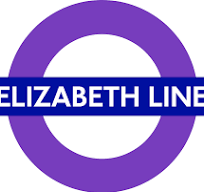
YE OLDE FORRESTE GATE
The gate, from which the area of Forest Gate eventually took its name, prevented cattle from Wanstead Fats wandering down the high street.You are at the entrance of EPPING FOREST. In a few minutes you will enjoying WANSTEAD FLATS.
The area is thought to have been given legal status as a royal forest by Henry II in the 12th century. At the time it was part of the much larger Forest of Essex, which covered nearly all of the county. The term Forest was a legal term, meaning that Forest Law applied, meaning that only the king had the right to hunt deer. The term did not mean the land was well wooded: the large majority of the Forest of Essexwas agricultural land.
The Forest of Essex gradually shrank in size as land was removed from Forest Law and it was replaced by a number of much smaller forests including Waltham Forest(which gives its name to the modern London Borough of Waltham Forest. Waltham Forest was a legally defined area which included the areas later known as Epping Forest and Hainault Forest; the rest of the Waltham Forest area was only lightly wooded.
In physical terms (rather than legal terms), the Forest is thought to have declined to something like its modern extent in the early fourteenth century (possibly long before),[7] the Black Death reached England in 1348, leading to a huge decline in population, perhaps between a third and a half, which took away the pressure on woods and commons, leading to a very long period of stability in the area of these land uses in England.[8] At that time the forest extended slightly further south to the Romford Road in the Forest Gate area of West Ham; this is the originally RomanA118 road from Aldgate
This land was part of HAM HOUSE ESTATE. DR.FOTHE4GILL established the estate filling his gardens with 3.400 especies of tropical plants.
The estate was acquired by the GURNEYS (in 1812, by SAMUEL, Quaker philanthropist),
From 1852 the estate was broken up and sold to developers: Cemeteries, FG Industrial SCHOOL, the GURNEY ESTATE of substantial middle-class houses, lesser streets of artisans’ dwellings, churches and associated schools (in the 20th c, RC).
Woodgrange Road area
“A farm on the forest”. The MANOR and farm outbuildings were situated where CAPEL RD. meets CHESNUT AVE., as recorded in 1594. RICHARD DE MONTFICHET donated the farm to STRATFORD-LANGTHORNE ABBEY. RICHARD I granted protection to the monks, from any interference on their land, in 1189.
THOMAS CORBETT purchased the land from the GURNEYS. In the last quarter of the 19th c. around 1,200 houses were built. 99 years leases, reasonable rentals, easy access (EC RWY), a local market… in 1891 257.000 people were living here (from the 19.000 of 40 years before).
The design of the houses is uniform, thanks to having only one developer. Only variations of types of brick, in the front railings and gates, in other decorative ironwork , sometimes the use of stucco, or of other artificial decorative features… See the glazed canopies and the iron columns (like in the station).
The CORBETTS were NON-CONFORMISTS, concerned about social problems and committed to built decent housing (as they had built in their native GLASGOW) and they had a a deep commitment to certain principles: this was a DRY ESTATE. No pubs.
CLAREMONT, OSBORN, HAMPTON ROMFORD ROADS
To the West, large houses with servants quarters attached.
RICHMOND RD, with traffic islands
Shops in WOODGRANGE ROAD
METHODIST CHURCH
Sculpture on the front of the Forest Gate Methodist Church, Woodgrange Road. The preacher is holding a book. The Sculpture leans out from the brickwork at quite an alarming angle. It is held in this position by being counterbalanced by the church organ inside the building. PETER PERI, sculptor
STATION
EC RWY 1841. Decoration have been preserved, after modernisation.
This area was a backwater… In absence of passengers the station closed between 1846 and 48
THE FLORIST
The domed roof of this kiosk originally was a feature of the railway station, but was removed when the station was refurbished. The turret with the dome was originally fixed to the corner of the main building.
CLOCK
The clock is combined with a drinking fountain and a Horse & cattle trough. Although this has been moved from it's original position, it still has with it two rectangular stone blocks. These were put there to make it easier for easier for riders to remount their horses after they (the horses probably) had taken a drink. When originally set up this was in the middle of the market.
COMPASS
a large circle about 14 yards/metres in diameter. It is surrounded by four seats and has a large cross in the centre whose arms point to the cardinal points. At the end of these are the letters N, E, S and W.
FORMER EAGLE AND CHILD PH, NOW PHARMACY


See the coloured wood carvings conveying the spirit of Merrie England: musicians, Queen Elizabeth I…
At least for the las 260 years has been an inn on this site. This one dates from 1896.
Sir Thomas Latham, who had no natural heir, adopted a baby boy found in his estate, under a tree, guarded by an eagle. The child was called FITZHENRY, but after inheriting the estate he changed his name to LATHAM. Later his daughter married into the STANLEY family (whose peerage goes back to the reign of RICHARD III) and one of the descendants was made EARL OF DERBY, the one who institute the famous horse race, in 1780.
The EAGLE and the CHILD featureon the coat of arms of the family.

MARKET PLACE

This is a reminder that this road junction marks the site where the local market used to be.

Along SEBERT RD
FORMER CONGREGATIONAL, NOW RADICAL CHURCH

Built 1884 by Francis J. Sturdy in brick. It has two octagonal towers, one with a dome. It has a grand interior with galleries on three sides, on iron columns. The church orignated in 1825 in a chapel in Forest Lane and later in Chapter Street. In the 1880s William Skinner built a new church here for what was then a new housing estate. It is now in use by other churches - Has since been Miracle Ministry Mission and is now AEC4UK – A Radical Church.
MANOR PARK CEMETERY
History TRAIL
Records show that today’s Manor Park Cemetery and Crematorium stands on a section of land that originally was owned by Hamfrith Farm which was registered under various ownerships as far back as the late 1700’s. However in 1851 the area was sold, for the sum of £17,710.00, to the philanthropist Samuel Gurney. He was already the owner of local manors Woodgrange and Ham House and had established Overend, Gurney & Co and Gurney’s Bank.
Samuel died in 1856 in Paris while travelling back to the UK due to ill health. His body was transported back to be buried in Friends Cemetery in Barking. Sadly his eldest son John also died in the same year. In 1872 the grandson, also called John, sold the Hamfrith estate to the British Land Company.
In 1874 the British Land Company sold on to the newly established Manor Park Cemetery Company Limited.
CENTRAL CHAPEL

The original chapels were built in 1877 along with the front gates and the Lodge House. They are recognised as fine examples of Victorian elegance. Sadly during the Second World War the Chapel Buildings were hit by Luftwaffe bombs on 23rd July 1944 leaving only the tower standing. A fine testament to the quality of the Victorian builders. Today we see the rebuilt chapels, around the old tower. This work was completed in November 1955 with the introduction of Cremation facilities. The incorporation of a Waiting Room facility, as an extension was completed in 1968.
ANNIE CHAPMAN

Second victim of Jack the Ripper (1888].
GRAVESTONE OF JACK CORNWELL, V.C.

Battle of Jutland on 31 May 1916 - John heroically manned one of the main guns during the conflict in order to protect his comrades. He was mortally wounded and died from his wounds on 2nd June having been transported to hospital in Grimsby. He was awarded the Victoria Cross posthumously
MEMORIAL TO THE BETHNAL GREEN victims

This wall commemorates the tragedy that occurred at 8.15 March 3rd 1943. While under threat of a Luftwaffe bombing raid the inhabitants of Bethnal Green were seeking shelter in the tunnels of the London Underground. While descending the steps a woman and her child fell over causing an avalanche of bodies to fall to the bottom of the stairs. It is reported that 300 people fell of which 173 persons were crushed to death. Many of the deceased were laid to rest in Manor Park Cemetery.
MATCH WOMAN SARAH DEARMAN

While working at the Bryant and May matchstick factory in Bow, Sarah Dearman led the successful Matchgirls Strike in 1888. The main aim of the strike was to protect women and teenage girls from the 14 hour days and terrible conditions they suffered in the industrial workplace. It was also common for them to be subjected to low pay and a system of punitive fines for not meeting production schedules. In particular ladies working at Bryant and May were also known to suffer from “phossy jaw” or phosphorus necrosis derived from working with toxic white phosphorus in the manufacturing of matchsticks. The result of the strike was the forming of unions to protect the rights of women. Sarah Dearman championed this cause and went on to represent her union at National and International level. She was buried at Manor Park on 3rd December 1945.

You can carry on the route through the CEMETERY towards MANOR PARK, LITTLE ILFORD and ILFORD


Alternative route MANOR PARK to VALENTINES

To the NW, along DAMES ROAD and you are on your way to LEYTONSTONE
VERA LYNN CLOSE
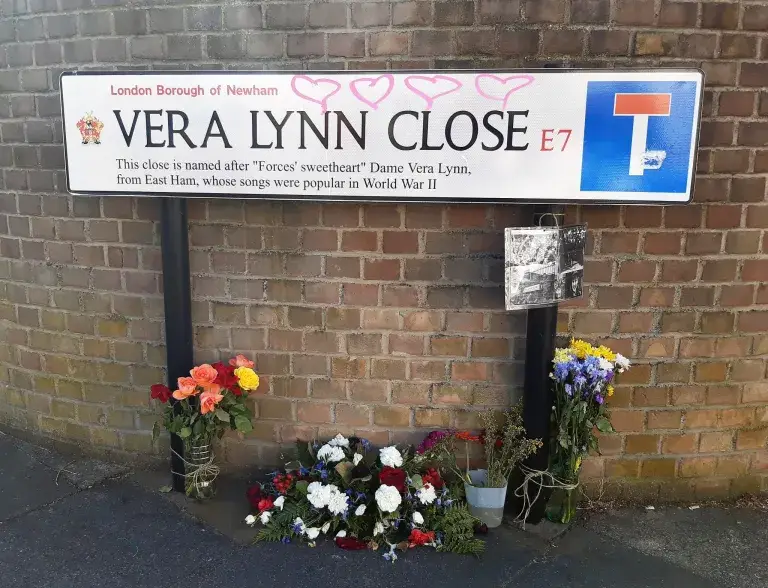

Vera Lynn was born ‘Vera Margaret Welch’ on 20th March 1917 at her family’s home in Thackeray Road–East Ham-London-E6 (now in the London Borough of Newham).
WANSTEAD HEATH
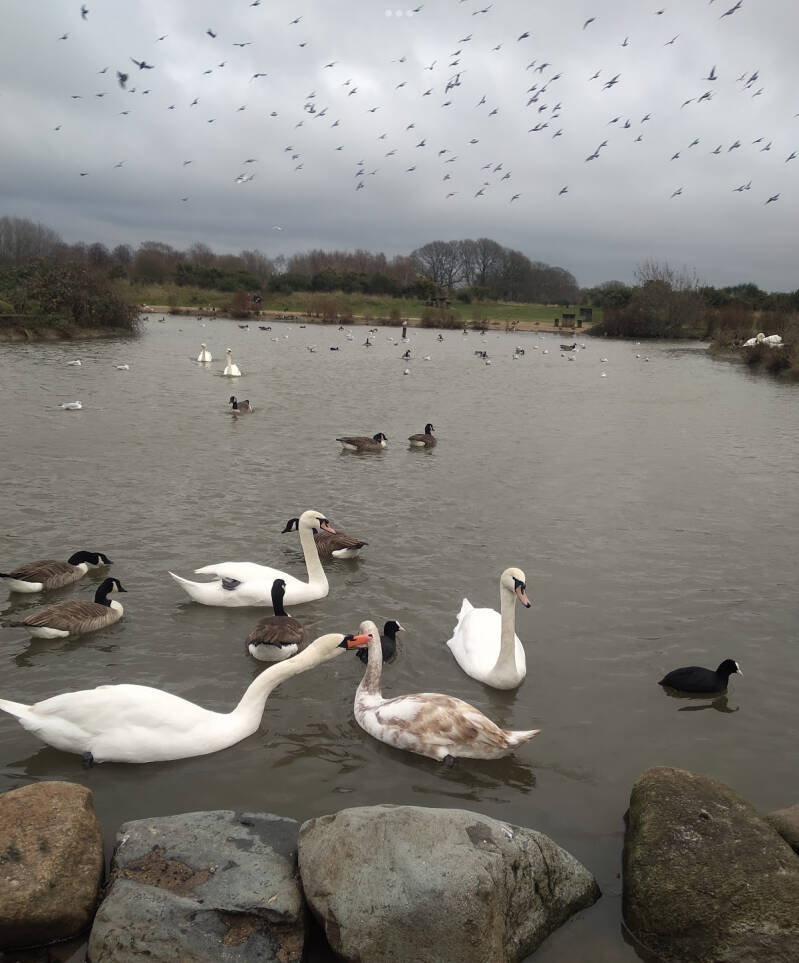
This is one of Epping Forest's richest sites for migrating birds
Wanstead Heath, is part of the larger Wanstead Flats, within Epping Forest. These flat areas have been almost treeless since the twelfth century, when the Abbots of Stratford grazed large flocks of sheep here. The gravelly soils support gorse, broom, heather and various grasses, which are a special feature of this part of Epping Forest.
At the end of the nineteenth century, groups of trees were planted to provide features and some shelter for wildlife.
At the same time, the underlying sands were dug out for use in making bricks for local houses. The large brickfield alongside Aldersbrook Road created a huge hollow which was levelled and football pitches were laid on the site.
Consisting mainly of acid grassland, which is a form of heathland, along with patches of tree cover and scrub, the soil is light and sandy with gorse, creeping willow and heather.
Wanstead Heath, together with nearby Leyton Flats and Wanstead Park, form one of London's most important sites for this acid grassland habitat.
Some very rare invertebrates associated with bare ground, such as solitary bees and wasps, have been recorded here, and it is an important site in London for skylarks. Some of the grassland with heath rush, tormentil and mat-grass is designated as a Site of Special Scientific Interest. Wanstead Heath is one of the richest sites in Epping Forest for migrating birds.
THE HOLLY TREE PH


Why not inspecting the railway arches under the LO line?
Strode to Station/Winchelsea Roads (arches 350 - 379) This is the most interesting and diverse sections of sub- trainian Forest Gate.


Welcome to WANSTEAD FLATS, EPPING FOREST

GEORGE III reviewed troops here… During Ww2 a battery of anti-aircraft guns was stationed here, during the 2012 OO & PPGG this was a police hub, from where they were deployed, after mustering and briefing, in 2029, during the COVID 19 PANDEMIC a temporary mortuary was established here
This is a place that becomes flooded after heavy rain, and which dries out fast in periods of low rain.
I contains 3 open water: ALEXANDRA LAKE, JUBILEE POND, ANGEL POND.
Small woods and copses planted at the end of the 19th c., to break up the monotonous grassland.
Coarse ULEX.
BROOM
JOSEPH FRY DRINKING FOUNTAIN
SITE OF BANDSTAND
Now marked by a circle of trees, the crowds joined in open air concerts and dancing in celebration of the 1937 CORONATION.
ANGEL POND

LEWIS ANGELL was the surveyor and engineer who planned it. Benches were around.8; it, paddle boats for kids. As this was a posh area, fashionably dressed people walk around heading along to listen to the band (the less posh locals called it THE MONKEY’S PARADE)

Along CAPEL ROAD
THE GOLDEN FLEECE PH

Alexandra Lake was built at the very beginning of the 20th century (approx. 1906/7) to give work to unemployed men, under the direction of the West Ham Distress Committee. There was a lot of unemployment at the time, and dock workers were only employed by the day, so schemes were set up to give men work (Another example is Hollow Ponds on Leyton Flats, which was built around the same time as part of a similar scheme).
The Alexandra Lake was named after Alexandra of Denmark, the Queen Consort of King Edward VII.
Route Inside the flats
The white painted wooden shed was used by anti-aircraft gun crews during World War II. It is now used as storage by the playing fields staff. The gun crews used a gun emplacement which was further on to the Flats.
Next to the white hut, towards the Aldersbrook Road, is a red brick building. This is also now used as storage, but originally was built as a decontamination building, to be used in case of a German gas attack.

CITY OF LONDON CEMETERY AND CREMATORIUM
Owned and managed by the CORPORATION OF LONDON. 260 acres: The second largest after ROSELAWN (BELFAST). In fact, BROOKWOOD isxlarger, but private. Anyone can be interred, no matter residence, or beliefs.
In 1849 a report by WJ HAYWOOD. Chief Engineers of the C.L. COMMISSION FOR SEWERS established that the churchyards presented high health risks, and that extramural interment sites had to be found for the CITY’S 106 parishes. HAYWOOD and Dr.SIMON, FIRST CHIEF MEDICAL OFFICER designed this cemetery.
The C.LDN purchased the land from the 2nd DUKE OF WELLINGTON, Lord of the Manor. 89 acres were designed (out of 200]for burials, on a porous well drained soil.
In 1855 it was laid out by landscape gardener DAVIDSON, following guidelines from LOUDON’s book. He created the word arboretum. The first interment took place in 56, and was consecrated in 57.
To the 600.000 interments have to be added the remains from the London churchyards (Union of Beneficies Act, 1860, authorised the demolition of some of the City’s more run down churches, freeing up their graveyards for building developments.) an the War graves.
The CREMATORIUM was added in 1904, but is now a chapel. The COLUMBARIUM is in fact the converted CATACOMBS, as they were not proven a popular method of burial.
MAIN ENTRANCE SCREEN

Robert Hooke
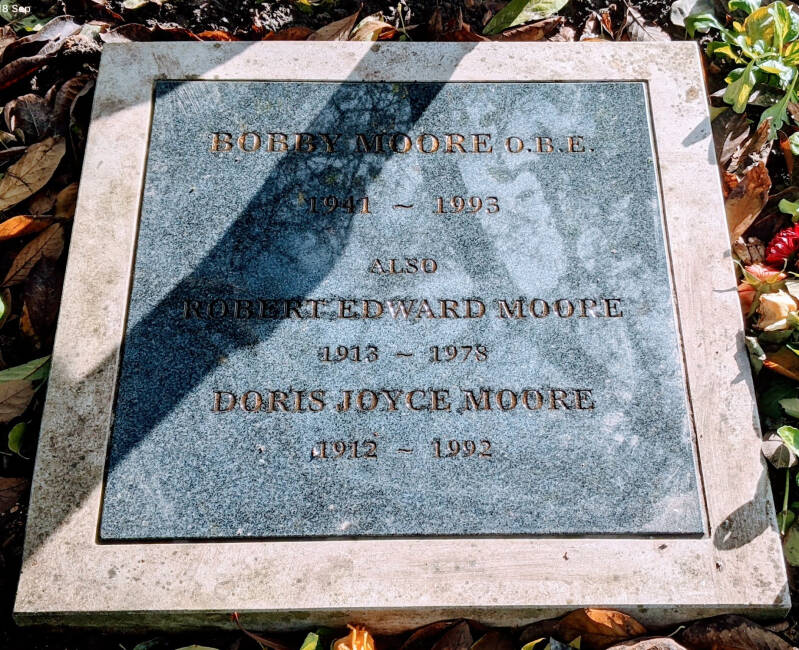

Catherine Eddowes
Mary Ann Nichols
Claude Duval

You are entering the LONDON BOROUGH OF REDBRIDGE
Map of listed buildings of REDBRIDGE

MANOR OF ALDERSBROOK
Feudal manor, named after the brook flowing to it, parish of LITTLE ILFORD. ALDERSBROOK HOUSE was within the precincts of the Cemetery, which covers most of the lands. To the a West there was an associated farmhouse.
Originally, NAGET (NAKED) HALL, was a tenement held by BARKING ABBEY. After the DISSOLUTION it was held by a few owners, until it was inherited by JOHN LETHIELLIER, descendant from DUTCH HUGUENOTS.
His son sold to SIR JAMES TILNEY LONG, owner of WANSTEAD, unifying thus the two manors.
The farm continued to function, and it was reb. In 1863. The Manor House was converted by TILNEY LONG into a farm. The City demolished it.
ALDERSBROOK CONSERVATION AREA
The EARL OF MORNINGTON bought sites belonging to the WANSTEAD PARK ESTATE and the C.OF LDN and assembled in a triangular block of land.
At the end of the 19th c. London experienced a wave of expansion, and the new middle classes created a demand for residential suburbs.
He sold plots of land, with conditions: minimum value of properties and villa style of houses.
Toward the edges, and belatedly, scattered, public facilities and communal buildings.
By 1910, the district was almost built on. Now, we Han enjoy an EDWARDIAN gem.
Variety of styles and ornamentation, which evolved within a short period.
Individually designed: the characteristics were tuned to the aspirations and resources of prospective purcharsers, and the tastes were changing. Developers built to satisfy.
The first houses, late VICTORIAN, are Italianate Gothic, with hipped roofs over bay windows. The EDWARDIAN buildings introduced REVIVALIST styles. The market was inherently conservative, but a certain AVANTGARDE was introduced: TUDOR and STUART side by side with architectural ornaments now mass produced in a variety of materials never seen before. The range of enrichment had never been seen before.
ROOF: medium pitch with gable ends. Then a variety of moulded, carved barge boards of half timbered infilling. Now Velux roof lights, box dormers, satellite dishes!
Individual roofs. Early ones in WELSH SKATE, with courses of fish scale patterns.
Decorative clay ridge, tiles and finials
WALLS: mostly with machine made orange/red bricks, in QUEEN ANNE REVIVAL. Some typical ESSEX pargetted panels.
GUTTERS/DOWNPIPES. Painted cast iron (now plastic or PVC)
FACIAS, EAVES, BARGEBOARDING. Timber (now p cu or other materials, shiplap boarding.
Now, brick elevations are painted. When they crack, water is trapped causing moisture. Not in original renders. Bricks need to be freed of vegetables, or mortar painting gets damaged. Lime mortar to be used,
PATHS. Short and straight, leading to front doors, formed on unglazed ceramic tiling in geometrical patterns, Now, front gardens have been converted into “crossovers”, destroyed.
CHIMNEY and POTS. Brickwork reported match original mortar.
TILES. Originals of slate or clay, for ridge capping, finials, fish seals, slating
LEAD at junctions with chimneys, projecting party walls and in valleys.
WINDOWS. Timber. Before 1914 (according to EH research) timber was imported, and more durable than any timber used ever since (now aluminium or pvc and frames too thick). Vertical, slid sash are most common. Some casements within a TUDOR style pattern of mullions and transoms. Plain glazing or plain to bottom lights and multiple panels on top.
PORCHES. Projecting. Cast iron or timber. Mass produced. Glazed tiling
DOORS. Part panelled, part glazed. On the fanlight, often found the name of the villa
While speculative builders were keen to build, the C.OF LDN saved some Green spaces. Recessed lobbies, glazed tiling
From FARM to PETROL STATION
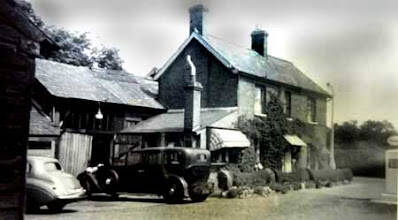
The petrol station was the site of Aldersbrook Farm (parts of the wall that you can see are from the wall around the farm house), which was re-sited here from its original location when The City of London Cemetery was built in 1854. In the early 20th century, when motor vehicles started to become common, the farm installed petrol pumps outside the farmhouse.
BAPTIST CH.
ST.GABRIEL’S CH OF E.

Before entering WANSTEAD PARK
Diversion owards VALENTINES MANSION & GARDENS and ILFORD and further East
See CHAPTER
RIDING SCHOOL
You are crossing the RIVER RODING. RODING VALLEY WAY
The old HYLE river rises at MOLEHILL GREEN, near DUNMOW, ESSEX, flowing through the RODINGS , passing CHIPPING ONGAR, and into the THAMES, forming the tidal BARKING CREEK.
Between LOUGHTON and CHIGWELL the RODING VALLEY MEADOWS conforms a nature reserve.
A crossing gave way to the name REDBRIDGE.
In ESSEX it forma a boundary between EPPING FOREST and BRENTWOOD, In London it forms the boundary between NEWHAM and BARKING & DADAGENHAM.
THE NORTH CIRCULAR

25{7 m (41’4 km), between CHISWICk and WOOLWICH FERRY, bypassing Central London across 1920s/30s industrial sites. From 6 lane dual carriageway to urban streets
VALENTINES HOUSE & GARDENS



ILFORD

WANSTEAD PARK
SITE OF THE HOUSE AND GARDENS
A modest MANOR HOUSE was modest in size until th3 15th c. as valutations indicate. It appears in the registers at least in 1520, enclosed as a royal hunting manor (did HENRY VIII bagged here his first deer?). This was a suitable place for meeting gentry during the TUDOR age and afterwards; courtiers like SIR JOHN HERON, RICHARD RICH, Lord Chamberlain, the MILDMAYS, the CHILDS,… LORD ROBERT DUDLEY, EARL OF LEICESTER accommodated here ELIZ.I. in more than one occasion. After riding from WESTMINSTER, PRINCESS ELIZABETHgreeted here sister MARY, proclaimed QUEEN in NORWICH, when the latter was on her way to Westminster to to oust LADY JANE GREY and be CORONATED. WANSTEAD PORTRAIT
By 1549, in ruins, according to records. The MANOR was reb. by succ. owners. QUEEN ELIZABETH’s favourites, thecEARLS OF LEICESTER and ESSEX.
It appears that the manor reverted to the Crown and JAMES I spent some time and attended sermons in the church.
The local church, though, Han anti royalist associations during the CIVIL WARS (PREBYTERIAN congregation)
From late 17th c, Magnificent structures were erected and large ornamental gardens erected.
JOSIAH CHILD, merchant banker and head of the EIC, undertook a substantial and highly elaborate formal landscaping scheme, planting walnut trees and creating a string of ornamental lakes.
RICHARD CHILD build WANSTEAD HOUSE.
WANSTEAD HOUSE: Like nothing seen before…
RICHARD CHILD commissioned COLIN CAMPBELL. It cost £380.000, that is £78 today. A 260ft Port. stone façade, portico with Corinthian columns. 2 flights of stairs. Beyond the entrance the GREAT HALL. And further on 70 odd rooms: grand state apartments , library, oak dining, grand saloon, purpose built ballroom room… Fine art, chandeliers, tapestries… scattered liberally.
”Fit to entertain a prince” , according to D.DEFOE. HOGARTH painted it. “Magnificent large building of hewn stone”. “Resembling a royal palace” (PETER KALM). “It exceeds any other house in England”(PHILIP MORANT).
The gardens expanded with one goal: creating a mini-VERSAILLES. To the West, to mark the entrance to the estate, a BASIN was dug.
Fruit and vegetable garden, Bowling green…
Grotto, “Temple”, statues, arches, mock fortifications…greenhouse, amphitheatre… summerhouse, orangery, clipped trees, lawns…
allées and promenades
A story of Regency romance gone wrong
CATHERINE married WILLIAM POLE-TILNEY-LONG-WELLESLEY, a spendthrift, a high stakes gambler and and adulterous. And a nephew of the 1st DUKE OF WELLINGTON. And with his rakish ways he destroyed the estate. An EAST LONDON lost a stately home (even a royal palace) that could have rivalled VERSAILLES.
CATHERINE had a long list of suitors (even the DUKEOF CLARENCE, future WIV, but ended marrying a rogue saddled with debt, but who changed his name (He was a WELLESLEY POLE.
After squandering the wife’s fortune through parties, philandering and profligacy, when creditors circled him, he fled.
The whole estate was auctioned off over 32 days, and a paltry £10.000 was obtained.
The house, demolished.
Catherine died months later, broken, only 36
Gardens site
CHALET WOOD
Filled with blue bells, an arrow straight lawn cuts it in half. It would have once extended to the grand house’s back door
THE PARK
GROTTO
On the edge of one of the ornamental gates. A small inlet behind was used as a boat house.
After opening to the public, a fire inn1884 almost destroyed it completely.
A doomed roof with encrusted pebbles, shells, stalactites, crystals and looking glasses… spectacular.
Now a picturesque ruin, serving as a reminder of the grottoes built in the 18/19th cs. in the large estates.
The ponds date back to the 17th c.
The artificial island was used to stage spectacles, when members of the staff dressed up, enacting mock battles for the entertainment of the guests.
“TEMPLE”, now VISITOR CENTRE
One of he only buildings still standing associated with WANSTEAD HOUSE. It was a place of banqueting and entertaining. B. before 1830.
Now used as a visitor centre, describing the history of WANSTEAD HOUSE, and offering info about EPPING FOREST.
Sections of wall plaster, pieces of mosaic…
Events, open air theatre
WANSTEAD PARK WATER LEVEKS
SITE OF A ROMAN VILLA
A 20 ft mosaic depicting a man and a horse
WANSTEAD GOLF CLUB
The BASIN sits in the middle
CLUBHOUSE
Remains of the 18th c. Stables.The complex may have originated as stables for the extinct Wanstead House (destroyed by 1825). Rocque’s 1735 map of Wanstead House depicts a range of buildings east of the church labelled as “stables and outhouses” and subsequent maps show similar features.
CRICKET GROUND
On the site of the front lawn of the house
ST.MARY’S
1787. Reb 70ft South of the previous. Paid by SIR JAMES TILNEY, owner of WANSTEAD HOUSE (he had estates in DORSET and WILTHIRE (DRAY IT).
The first recorded rector was in 1207, but there was a church here before that date.
Arch. THOMAS HARDWICK (ST.JOHN’S WOOD Church, work at HAMLTON COURT and KEW, restoration of BART’S HISP.). Father of PHILIP.
BISHOP OF LONDON BEILBY PORTEUS consecrated it.
St Mary’s is a fine example of a late Georgian ‘preaching’ style church with galleries and box pews and is virtually unaltered since it was built
THE GRAVE OF JOSEPH WILTON: Watching for body snatchers

B.in the 1830s it provided shelter for the guard employed to keep watch for body snatchers.
At the end of the 18th c., beg. of the 19th. , only bodies of executed criminals could be used for dissecting. Thus, few bodies were available, so that hospital and medical schools us3d to pay sizeable sums of money for corpses. They were provided by GRAVE ROBBERS who dug up recently buried bodies and sold them.
In SCOTLAND, a most notable case: in 1829 WILLIAM BURKE was executed for committing murder to provide a body for dissection…
Based in BARKING, in the 1829s, a number of great robbers
The astronomer rector and the nephew apprentice
REVEREND POUND
The astronomer rector was JAMES POUND. He was from WILTSHIRE, went to OXFORD, graduated from a few HALLS and obtained a discal diploma. He started service, as a chaplain, at the EIC. Escaped a mutiny, came back Tom England and was presented by SIR RICHARD CHILD with s the rectory here (1707).
He got hold of a HUYGENS 123 ft focal length objective glass lent by the RS (or given to him by I. NEWTON?), which he set up,in WANSTEAD PARK, mounted on the MAYPOLE, just removed from the STRAND.
The site was probably within what is now the golf course.
He observed with it the 5 known satellites of SATURN, and those observations allowed HALLEY to correct their movements. NEWTON, as well employed in his PRINCIPIA his micrometrical measures ++
NEWTON as well obtained from him dátate for correcting the places of the 1680 (NEWTON)COMET (GREAT COMET, KIRCH’S COMET), the first discovery by telescope .
LAPLACE,as well, used REVEREND POUND’S observations of JUPITER’s satellites for his determination of the planets mass.
In 1719 he completed a set of tables for the first satellite into which he introduced an equation for the transmission of light.

Born in SHERBORNE, 1693, , vicar in BRID ST. He was the son of REVEREND POUND’S sister, and he was trained by uncle POUND with whom he made many observations,including the opp of MARS AND the first transit of MERCURY, and they measured y IRGINIS (PORRIMA, star system), the first made of the components of a double star, in order to determine the star parallax (shift of position apparent).
he became the greatest astronomer of his age (“in Europe”, according to. EWTON): to him we own the discovery that the earth is in motion.
In 1727 PRIESTLEY erected a telescope of his own, in the RECTORY, here in WANSTEAD, now the WANSTEAD HIGH SCHOOL.
He embarked in a series of observations , obtaining the precise position of stars that transited close to the zenith, thanks to the large field of view of the instrument.
Combining with the observations of his friend SAMUEL MOLYNEUX (in his DUTCH HOUSE in KEW) he established the existence of phenomena of abstraction of light (apparent motion). And, as well, allowed PRIESTLEY to formulate a set of rules that would allow the calculation of the effect of any given stars at a specific date.
He discovered the slight “wobble”of the EARTH!due the gravitational effect of the MOON.
In 1742 he was appointed ASTRONOMER ROYAL, succeeding HALLEY.
The BRADLEY MERIDIAN, the first British one, was set, to establish time, according to the location of JB’s telescope, that is GREENWICH, in 1750. It was marked by the N-S line running through the TRANSIT INSTRUMENT first used by JB. The earliest OS MAPS used that meridian.
In 1850 the AIRY TRANSIT CIRCLE TELESCOPE was erected, and the GM was moved 17 feet East to its present location (1/30 of a second)







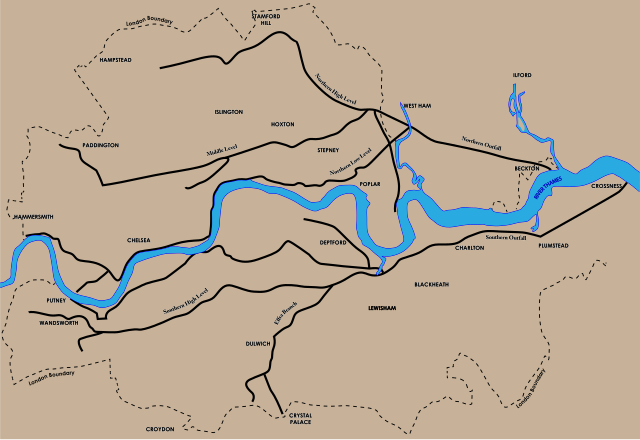










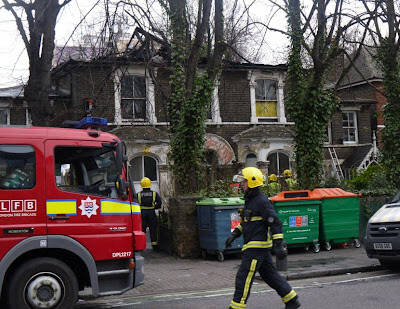

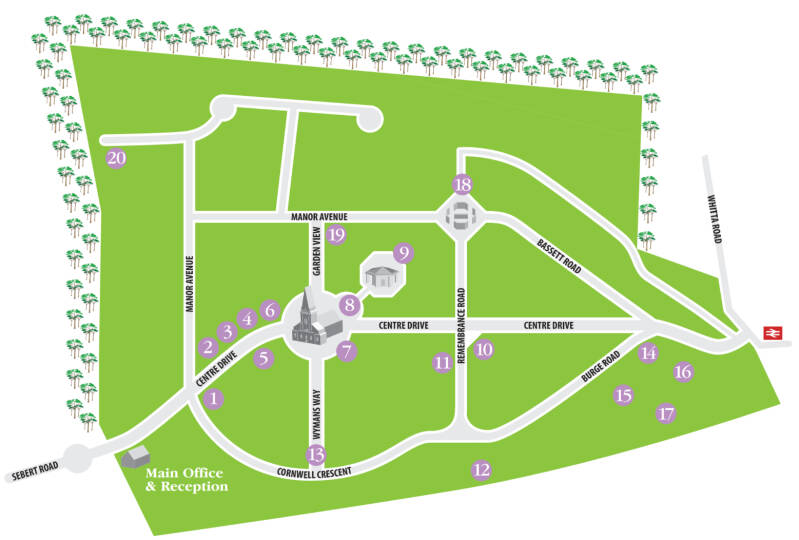
















Create Your Own Website With Webador